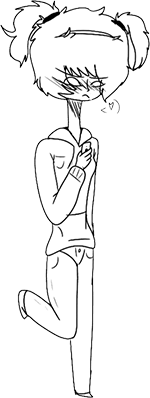Seasonal Affective Disorder (SAD)
Someone suffering from Seasonal Affective Disorder (SAD) experiences symptoms of depression during a specific season. Most people can feel a little down at some point during the colder months, retreating to the warm indoors and staying in our beds, but SAD can last for up to 4 months before the symptoms start to settle down. There is also a less severe form of the disorder called winter blues or sub-syndromal SAD (S-SAD).
Between 3 and 6 in 100 people in the UK are thought to have SAD, and around 13 in 100 people experience winter blues, so you are definitely not alone! Countries nearer the equator that have more hours of sunlight consistently throughout the year have less cases of SAD and winter blues. It usually develops between the ages of 20 and 30 and affects four times as many women as men.
SYMPTOMS OF SAD
In countries north of the equator, such as the UK, symptoms typically develop between September and November and continue until March or April. Symptoms of SAD may become progressively worse as the hours of daylight become shorter.
SAD can develop over any season however, and is not limited to Winter.
Who develops seasonal affective disorder?
Between 3 and 6 people in 100 in the UK are thought to experience SAD. Many more, perhaps as many as 12-13 in 100, have winter blues. SAD is less common in countries near to the equator where the hours of sunlight are more constant and bright throughout the year. SAD usually first begins between the ages of 20 to 30 but it can develop at any age. It affects four times as many women as men.
Symptoms can include:
- Difficulty in waking up in the morning
- Decreased energy/lethargy
- Craving for sweet and starchy foods (carbohydrates)
- Increased appetite
- Increased sleep
- Weight gain
- Difficulty concentrating
- Decreased interest in sex (loss of libido)
- Withdrawal from family and friends
- Depression/anxiety/irritability
- The symptoms usually improve fairly quickly – over a period of a week or so.
WHAT IS WINTER BLUES?
During the winter a lot of people tend to feel a little low, can put on some weight and generally feel more tired. These are not the full symptoms of depression that occur in SAD so it is called having winter blues.
HOW TO TELL IF IT’S SAD OR DEPRESSION
If you have experienced episodes of depression only during certain months for at least two years with no symptoms during other months you are likely to have SAD. SAD is caused by a lack of light in certain times of the year whereas general depression can have many other causes and can happen any time of year.
You or your doctor might not realise that you have SAD for a long time. This is because it is easy to confuse SAD with general depression. You may have been treated for depression several times over the years before it emerges that you have the seasonal pattern of SAD.
TREATMENTS FOR SAD AND S-SAD
SELF HELP
Self-help can often help mild winter blues (S-SAD) and can also be used together with other treatments to help SAD.
Try to get as much natural sunlight as possible. Ideally, a 1-2 hour walk outside in the sunlight, especially at midday on bright days. Regular exercise can also help relieve the symptoms. It is also important to let your family and friends know so that they can understand how you are feeling and can help.
LIGHT THERAPY
Light therapy uses special light boxes that are specially designed to treat the symptoms of SAD. They come in a variety of shapes and sizes – the most common is the size of a sheet of paper and can fit on your desk. Having the light face you for 2-3 hours (30-45 minutes if it’s particularly powerful) per day is usually enough to help ease symptoms.
GENERAL DEPRESSION TREATMENTS
Various antidepressant medicines and talking therapies such as cognitive behavioural therapy (CBT) that are usually used to treat depression can also be effectively used to treat SAD.
